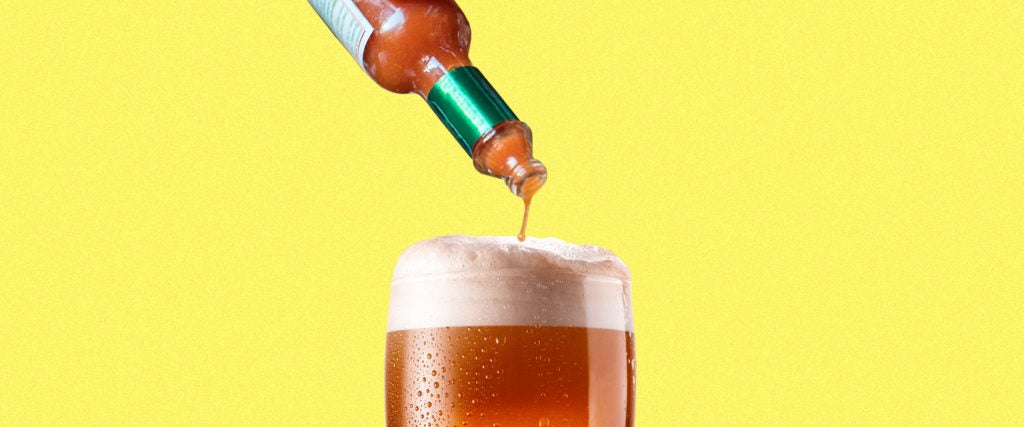Nearly a decade removed from graduation, it can feel impossible to recall any specific memories of weekends in college, but there is one night I’ll never forget. I was at Murphy’s Pub, my favorite campus bar at the University of Illinois, when my roommate grumbled that, after four years, he couldn’t drink another pitcher of Keystone Light. “It’s just rejected Coors Light,” he argued. “Shouldn’t we try maturing our tastes before graduation?”
Without a word, the bartender grabbed a bottle of Tabasco from the bar and shook two drops into my roommate’s pint glass.
Did this prick bartender just sabotage his drink for speaking ill of Keystone Light? I wondered.
As my roommate struggled to find a way to object without being thrown out of the bar, the bartender urged him to take a sip. “It’s better now,” he said. “Just try it.”
We complied, and to our amazement, the shake of Tabasco did indeed completely turn around that pint of garbage light beer. It didn’t make the beer taste different, per se. It just somehow made it taste like a better version of itself — with a nearly imperceptible kick of spice for an aftertaste.
Needless to say, we spent the rest of our senior year gleefully putting Tabasco in our beer, much to the confusion and disgust of anyone else in our orbit. And while the bartender that fateful night exists in my hazy memory as some celestial being, he was simply passing down a decades-old cheap beer hack.
Per professional chef and food blogger Jim Mumford, the idea likely evolved from a desperate attempt at the Michelada, “a Mexican drink borne of beer, lime, spice and some sort of tomato based juice that’s been around forever.”
As these things tend to go, the tradition is now becoming mainstream. According to Food & Wine, which describes hot sauce as “The One Ingredient That Makes Cheap Beer Taste Incredible,” bars like Mother’s Ruin in New York have transformed this emergency-Michelada-cum-shitty-beer-hack into an Instagrammable affair.
If rehabilitating piss-tasting suds with Tabasco sounds too good to be true, I urge you to grab that crusty old Bud Light can in the back of your fridge and give it a try. In the meantime, Mumford offers a pretty solid explanation for why hot sauce enhances the flavor of a cheap beer. “While I wouldn’t recommend a few dashes in a fruity double IPA, hot sauce can make neutral-flavored light pilsners or lagers truly shine,” he explains. “It just makes sense: The acid and salt in a few drops of hot sauce will bring out the subtle sweet or malty notes in the beer, which, for a light beer, is hard to find unadorned. Plus, the hint of spice allows for a palate cleanse, so to speak, from some of the bitterness such beers have.”
Maybe, though, a drop isn’t enough. Maybe you want to douse the top of your beer in hot sauce, like Pub Royale’s “Dressed Hamm’s” in Chicago:
Mock it if you must. But it’s also not all that different from what you’re doing when hoovering down a bag of Tostitos. “Since it’s mostly just alcohol, water, yeast and various malty sugars, to the tongue, light beer is basically liquid bread,” Mumford concludes. “So much like you would dunk a flour tortilla into salsa, dousing hot sauce into beer just flat works.”

